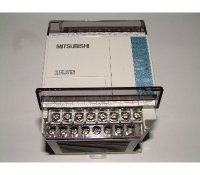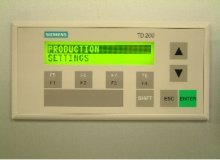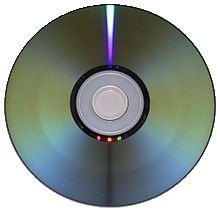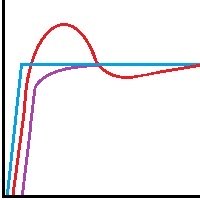|
The FAQ ofMachine Information SystemsThis FAQ page will cover all aspects of the harware, software and electrical terminology used throughout this site. Although the wording here will more of a technical description rather than the lovely flowing explanation by example technique employed on the rest of the site.
FAQ: What is a Machine Information System?
FAQ : What is a PLC?
The machine or system user rarely, if ever, interacts directly with the PLC's program. When it is necessary to either edit or create the PLC program, a personal computer is usually (but not always) connected to it.
The PLC has a remarkable capacity for real-world I/O connectivity. Most PLC models feature a vast assortment of interchangeable I/O modules, which allow for convenient interfacing with virtually any kind of industrial or laboratory equipment.
Most PLCs are programmed in a special language called Ladder Logic. Ladder Logic is essentially a Boolean logic-solving program with a graphical user interface designed to look like an elementary wiring diagram, familiar to all industrial electricians.
There are several manufacturers of PLC's such as Mitsubishi, Siemens and ABB to name a few.
FAQ : What is a HMI?
The HMI's job it to convert the intentions and signals from a human into electrical signals for the machine information system to use. Thus in doing so, allows the human operator to make interactive changes in the software process and data. An example would be pressing a button to reset the production count.
HMI's quite often have a display incorporated into them as well to enable the operator to see the relevant data to the action being performed.
The evolution of the computer has and continues to have a great impact on society and industry. We are in an adjustment cycle with the current computer evolution, but more importantly some of us are trying to adjust to meet the changes for the coming decade.
Hardware and software are continually being enhanced. Computers are becoming more powerful and will eventually provide a far more effective man, sorry human to machine interface. But we're doing ok in the mean time!
FAQ : What is a DVD? Pre-recorded DVDs are mass-produced using moulding machines that physically stamp data onto the DVD. Such discs are known as DVD-ROM. The ROM part stands for 'Read Only Memory' because data in the memory, in this case the DVD, can only be read from and not written to, changed or erased. Blank recordable DVD discs (DVD-R and DVD+R) can be recorded once using a DVD recorder and then function as a DVD-ROM. Rewritable DVDs (DVD-RW, DVD+RW, and DVD-RAM) can be recorded and erased multiple times. DVDs are used in DVD-Video consumer digital video format and in DVD-Audio consumer digital audio format, as well as for authoring AVCHD discs. DVDs containing other types of information may be referred to as DVD data discs.
FAQ : What is PID control?
The mission of the controlling device is to make the measured value, usually known as the PROCESS VARIABLE, equal to the desired value, usually known as the SET POINT. The very best way of accomplishing this task is with the use of the control algorithm we know as PID.
In its basic form, PID involves three mathematical control functions working together: Proportional-Integral-Derivative. The most important of these, Proportional Control, determines the magnitude of the difference between the SET POINT and the PROCESS VARIABLE (known as ERROR).
This then applies appropriate proportional changes to the CONTROL VARIABLE to eliminate ERROR. Many control systems will, in fact, work quite well with only Proportional Control. Integral Control examines the offset of SET POINT and the PROCESS VARIABLE over time and corrects it when and if necessary.
Derivative Control monitors the rate of change of the PROCESS VARIABLE and consequently makes changes to the OUTPUT VARIABLE to accommodate unusual changes.
Each of the three control functions is governed by a user-defined parameter. These parameters vary immensely from one control system to another, and, as such, need to be adjusted to optimize the precision of control.
The process of determining the values of these parameters is known as PID Tuning.
PID Tuning, although considered "black magic" by many, really is, of course, always a well-defined technical process. There are several different methods of PID Tuning available, any of which will tune any system. Certain PID Tuning methods require more equipment than others, but usually result in more accurate results with less effort.
FAQ : What is a Diode?
Forward Current, this is normally expressed as a maximum value and is the highest continuous conducting or on current the diode can handle without damage.
Forward Voltage, this normally expressed as a typical or peak value and is the voltage dropped across the diode when conducting.
Reverse Voltage, this is normally expressed as a peak value and is the maximum circuit voltage the diode can handle, go over this on unconsidered back emf peaks for example and you'll puncture the PN junction and kill the diode!
Reverse Recovery Time, this is normally expressed as a peak value (in nano or micro seconds) and describes the fastest response time the diode can switch from on (conducting) to off (blocking). This value basically denotes the highest operational frequency limit of the diode.
Power Dissipation, this is normally a maximum value and is the power derived from the forward (on) voltage multiplied by the forward (on) current in Watts. For example, a diode with a forward voltage of 1.7V and conducting a current of 10A will be dissipating 17 Watts continuously. A heat-sink is often used with power diodes to aid cooling of diode to keep it within its power dissipation limit.
FAQ : What is a LED? The LED will emit incoherent narrow-spectrum LIGHT when electrically biased in the forward direction of the P-N junction. When a voltage is correctly applied to a LED, it is called being forward biased, just the same as the diode when conducting the current (on). P and N are the semiconductor materials diodes and transistors are made up of. Forward biased simply means a more positive voltage on the Anode than the voltage on the Cathode. If this (forward) voltage different across the LED is not more than its forward conducting voltage (or it's reversed) then the LED will not light up. This lighting effect is a form of electro luminescence. The colour of the light emitted from the LED depends on the composition and condition of the semi conducting material used in its construction. The range of colour can be infra-red light, visible light in a wide variety of colours or near-ultraviolet.
FAQ : What is a Transistor?
They are so named because of the arrangement of semiconductor material they are made up of. They have three connections or legs as they are called, a collector, a base and an emitter. The switch is made between the collector and emitter, using the base as the on/off signal.
An NPN transistor will switch a positive voltage on the collector to the emitter, if a positive voltage is placed on the base with respect to emitter.
FAQ : What is a Capacitor? Capacitors are available in many different shapes, sizes and capacity but all contain at least two electrical connections joined to conductors that are separated by a dielectric or insulator. A common construction method consists of two metal foils (plates) separated by a (thin) layer of insulating material, the dielectric. Capacitors are a very widely used component of electrical and electronic circuits in many common electrical devices.
A Capacitor is an electronic component that is used to store energy in the form of an electrical charge, similar to a battery. While they have similarities to a battery, storing a charge, two terminals, They are different in how they work and behave electronically.
Capacitors are used in many ways including DC decoupling (DC smoothing) as in power supplies, AC coupling (DC blocking) in signal circuits, charging and discharging in timer circuits, oscillation tuning in LCR circuits (L=coil C=Capacitor R=Resistance) as in radio and TV tuners.
When a Voltage is placed across the plates or conductors, a static electrical field then develops across the dielectric, this causes a positive charge to collect on one plate and negative charge to collect on the opposite plate. Energy is stored in the developed electrostatic field.
Capacitors are characterized by a single constant value, its capacitance and measured in units of Farads. This is the ratio of the electric charge on each conductor plate to the potential difference (voltage) between them. Capacitance is the greatest when there is a very narrow separation between two large areas of conductor or metal plates, capacitor conductors are often called plates, this is referring to an early means of construction.
If you have a specific FAQ you would like to see here or just one FAQ you would like an answer to, you only have to ask.
Close Window or Return from FAQ to Home For information on facilities, mechanical, electrical, building engineering, air-conditioning, reverse osmosis, deionized water, waste, ventilation, steam, compressed dry air, fire sprinkler, fire hose reel, vacuum, maintenance, sanitary...
|





 You may want to
You may want to  This is a Siemens HMI panel, this particular model is a TD200. A HMI (also know as a MMI sometimes) stands for Human to Machine Interface and Man to Machine Interface respectively. Although MMI is not perceived to be politically correct these days so you will hear that term less and less.
This is a Siemens HMI panel, this particular model is a TD200. A HMI (also know as a MMI sometimes) stands for Human to Machine Interface and Man to Machine Interface respectively. Although MMI is not perceived to be politically correct these days so you will hear that term less and less.  A DVD (Digital Video Disc) is an optical disc storage format, invented and developed by Philips, Sony, Toshiba, and Panasonic in 1995. DVDs offer higher storage capacity than Compact Discs while having the same dimensions.
A DVD (Digital Video Disc) is an optical disc storage format, invented and developed by Philips, Sony, Toshiba, and Panasonic in 1995. DVDs offer higher storage capacity than Compact Discs while having the same dimensions.
 PID can be described as a set of rules with which precise regulation of a closed-loop control system is obtained. Closed loop control means a method in which a real-time measurement of the process being controlled is constantly fed back to the controlling device to ensure that the value that is desired is, in fact, being realized.
PID can be described as a set of rules with which precise regulation of a closed-loop control system is obtained. Closed loop control means a method in which a real-time measurement of the process being controlled is constantly fed back to the controlling device to ensure that the value that is desired is, in fact, being realized.